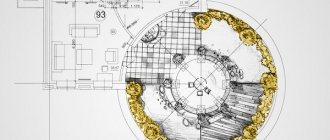Synectics is a form of searching for new ideas through the construction of analogies. Author - W. Gordon (USA, 1952). In fact, this is an improved method of “brainstorming”, which is based on the principle of “making the known strange and the strange known.”
Synectics is the process of searching and creating new associative connections. Synectics is a cocktail of logic, facts, imagination, analysis and synthesis.
The synectics method operates on the same principle as other methods of associative search for ideas. It is based on the ability of the human brain to establish analogies - a variety of connections between words, concepts, feelings, thoughts, impressions. This property leads to the fact that a single word or observation can cause a whole stream of thoughts in us. Analogies help to “connect” a wide variety of experiences, knowledge and impressions to solve a given problem.
Types of analogies
Direct analogy
An example of a direct analogy in a LEGO advertisement
A direct analogy is the search for similar solutions and business ideas. We look for similar facts in different industries, compare and research. Most often, comparisons are made with biological (plants, trees) and technical systems (vehicles, aircraft). To work well with direct analogies, people with diverse knowledge are required, prone to systematic analysis of tasks and problems, who easily go beyond their professional boundaries.
Personal (subjective) analogy
Personal (subjective) analogy
You need to imagine yourself as what the problem is about. Subject, phenomenon, problem. A personal analogy is getting used to the problem. You can imagine yourself as a client or an advertised product and try to describe “your” capabilities and sensations. Working with this analogy requires good imagination and the ability to transform. It is important to “get used to” the role, to become part of the problem under consideration. It’s worth turning off your rational censor for a while, which usually blocks “stupid” fantasies. Personal analogies may seem quite strange, beyond the bounds of logic. But it is personal analogies that give the team fresh ideas.
Symbolic analogy
Symbolic analogy in Snickers advertising
Paradoxes help us look at a problem in a new way. Symbolic analogy is the search for paradoxes and contradictions in the familiar and understandable. The sinector must understand and describe the very essence of the phenomenon, then find the opposite of this phenomenon. It is required to discover what opposite phenomena have in common and... briefly, in one or two phrases (sometimes completely illogical and strange), describe the connection between these phenomena. Comparisons, allegories, and metaphors can be used here, where the properties of one thing are identified with the properties of another.
Fantastic analogy
A fantastic analogy allows you to come up with the most unusual images. In a nutshell - you describe the desired result and at the same time do not take into account any objective laws of reality, you give free rein to your imagination. You just need to turn on your imagination and imaginative thinking to the maximum, and everything will work out!
Fantastic analogy
Adobe Instagram - a selection of works that can surprise you
Features of the method
Direct analogy. A technique aimed at considering solutions to similar problems in various areas of human knowledge, in nature
Particular attention should be paid to the biological analogy. Nature has an almost inexhaustible supply of ideas.
The bridge and the web, the heart and the pump, the structure of the skin of a dolphin - soft lining for submarines...
Subjective analogy.
Personal analogy, empathy. The technique of entering someone else’s “skin”, getting used to the image of the object being improved, trying to merge with it, in order to understand and imagine the state of the object itself. For example, what will he feel if he performs the function of a helicopter rotor blade, what forces will act on him; what will he experience as a soccer ball? Entering the role of someone or something requires training, like an actor, you need skills and knowledge, you need to develop creative imagination.
Symbolic analogy.
When formulating the task, they use poetic comparisons, images and metaphors that reflect the essence of symbolic analogy. It is necessary to clearly show the essence of the conflict underlying the problem. Finding the SA can be facilitated by the “book title search” technique:
- The key word is highlighted from the problem statement.
- Then it is necessary to give a figurative definition of the essence of this in a nutshell, containing a paradox.
Fantastic analogy
. A technique in which, to solve a problem, it is proposed to introduce some unreal, fantastic means (for example, a magic wand) or characters who perform what is required by the conditions of the task. How would fairy-tale characters solve this problem?
What would happen if... (noun)... (verb)? A noun and a verb are randomly selected. Then the answer is given.
How does synectics work? Main stages
Stage 1
First, a group of specialists of 4-6 people is selected - the so-called “development department”. It consists of 2-3 people who are specialists invited from outside and representing different areas of knowledge or professions, and 2-3 people who are members of the main team for whom the work is being carried out. It is necessary to select specialists based on a combination of their knowledge, flexibility of thinking, diversity of practical experience, age and psychological type. It is advisable that it be different for everyone. The group must be located in a separate room. This room must be equipped with the required equipment; it must have a marker board, markers, paper, pens, etc.
Stage 2
The group should be given the opportunity to conduct a test session on the use of analogies to “warm up” all participants and train their creative skills. Synectists must discuss the analogies found in order to analyze the creative process itself. At this stage, it is important to understand the very principle of finding solutions.
Next, the four types of analogies presented above (direct, personal, symbolic, fantastic) are put into action. They can capture the experiences, knowledge and thoughts of all group members. It is important that each member of the group overcome their fear and boldly express the most unusual thoughts.
Stage 3
At this stage, the problem is directly solved, which also consists of several components:
- Formulation of the main problem. To ensure that all participants clearly understand the task;
- Discussion of possible solutions and discarding ineffective ones (allows you to reduce time to solve a problem and not waste energy and creativity on unnecessary ideas);
- Search for analogies that can allow you to express the task in terms of concepts that are familiar and familiar to each member of the group (so each participant will be able to put forward their own proposals);
- Identification of all kinds of problems and difficulties that create obstacles to solving the problem (allows you to eliminate emerging obstacles and come to a solution in the shortest way);
- Asking leading questions and “working through” each of them (clarification and specification of the solution).
When analogies become too abstract, the discussion of the problem moves into a more practical and understandable direction for all participants. When at least one promising idea appears, it must be developed to the point where it becomes applicable in practice.
Often, analogies allow you to transform familiar ideas into unusual ones. This increases the likelihood of finding the right solution. In addition, it helps to use the knowledge and experience of the participants in the process of finding this solution.
Stage 4
A solution to the problem was found and turned out to be effective. At the last stage, the group is asked to search for solutions to other problems that are relevant at the moment. Conditions and time frames for this stage are discussed separately.
What's the plan of action?
The concept of “analogy” includes four fundamental types of this method of solving problems: direct, symbolic, subjective and fantastic analogies, each of which covers the experience and thoughts of people.
Each of these types has its own rules for searching for analogies.
They become more obvious if we introduce the following classification:
- Direct - real.
- Symbolic – abstract.
- Subjective - bodily.
- Fantastic - unreal.
Simple analogies imply a conclusion during which, based on the similarity of two objects in some characteristics, they conclude about their similarities in others. They are used in the classification of a number of objects. Complex analogies are conclusions that are made based on a set of characteristics of objects through various inferences.
How is synectics different from brainstorming?
There are two differences.
- Synectics does not involve the refinement of ideas; it is limited to associations, analogies, images, metaphors, comparisons and descriptions of sensations.
2. Unlike classic brainstorming, criticism is allowed when using synectics.
These two differences together allow you to improve, change or abandon the ideas expressed.
At the initial stage of the synectics method, analogies are used to most clearly identify and assimilate the essence of the problem being solved by participants. It is necessary to abandon obvious solutions. Then, in the process of a specially organized discussion, the main difficulties and contradictions that impede the solution are identified. New formulations of the problem are developed and goals are defined.
In the future, with the help of special questions that evoke analogies, ideas and solutions are searched for. The resulting solutions are evaluated and verified. If necessary, a return to the problem occurs to re-discuss it and develop previously obtained ideas.
A little history
This method originated around the 1950s thanks to William Gordon, who spent a long time trying to create more adaptive and advanced versions of brainstorming, and eventually invented this method. Although it is an improved version, synectics differs significantly from its origins in that it allows for criticism and the use of analogies.
I'll give an example to make it clearer. Do you know how Pringles chips came about? Kellogg asked Gordon to help come up with a way to make chip packaging that was as compact as possible while still protecting against damage to the product, both during transportation and during storage or sale. William suggested an option that is used to clear streets of fallen leaves.
If you try to collect dry leaves in a garbage bag, the process will be long and painstaking, because they will break, fly in different directions and take up a lot of space. But if you wet a pile of leaves, they will “stick together” and will not leave gaps in the bag, nor will they crumble under any impact on them. Brilliant, right?
Example
W. J. J. Gordon used this strategy to develop Pringles. The company was faced with the task of creating new potato chips and packaging that would be more efficient and would not require filling the bag with more air than the volume of the chips themselves. The paradox was that the chips should be packaged more compactly and not break. The "book title" that captures the essence of this paradox was "Compact Indestructibility." As an analogy, they chose to place fallen leaves in a bag in the fall. When you try to stuff dry leaves into a plastic bag, you face certain difficulties. But when the leaves are raw (a unique feature), they are soft and easily change shape. A wet leaf takes the shape of the adjacent leaf, leaving only a little air between them. Wetting and molding dry potato flour solved the packaging problem and gave birth to Pringles. Several years ago, I gave a seminar to a group of engineers who worked in a foundry where they sandblasted forged metal parts. They used sand to clean the parts, but it got into the cavities and it took a lot of time and money to remove it. The paradox is that in order to clean parts, the particles must be hard and at the same time not hard so that they can be easily removed. The “book title” “Vanishing Hardness” was used to describe the essence of the problem. This led them to think of ice as an analogy. The unique thing about ice is that it melts. The solution to the problem was the production of particles from dry ice. The solid particles will clean the parts and then turn into gas and evaporate.
Michael Mikalko, Mind Games. Training for creative thinking, St. Petersburg, “Peter”, 2007, p. 302.
Morphological analysis
To generate new ideas. Invented by Swiss astronomer Fritz Zwicky. It is based on the construction of a table that lists all the main elements that make up the object and indicates, possibly, a larger number of known options for implementing these elements. By combining options for implementing object elements, you can get the most unexpected new solutions.
The sequence of actions is as follows:
- State the problem precisely. For example: Business card. More precisely: a bright, unique dentist business card that is difficult to forget).
- Determine the most important elements of the object. Example: shape, cover of a business card
- Determine options for the design of elements.
- The main recommendation is that no evaluation of options should be carried out until the morphological set is fully formed. An example of object parameters: business card shape - ball, rectangle, etc., coating - plastic, cardboard, sausage, etc.
- Enter them into the table.
- Evaluate all the options available in the table, analyze and evaluate them in terms of the goals that must be achieved. Examples: round edible, rectangular made of plastic, etc. Select the best option.
For example, you need to come up with a business card for a perfume company. If you change the classic rectangular shape and the effect on the senses, you can get a triangular business card with the smell of perfume.









